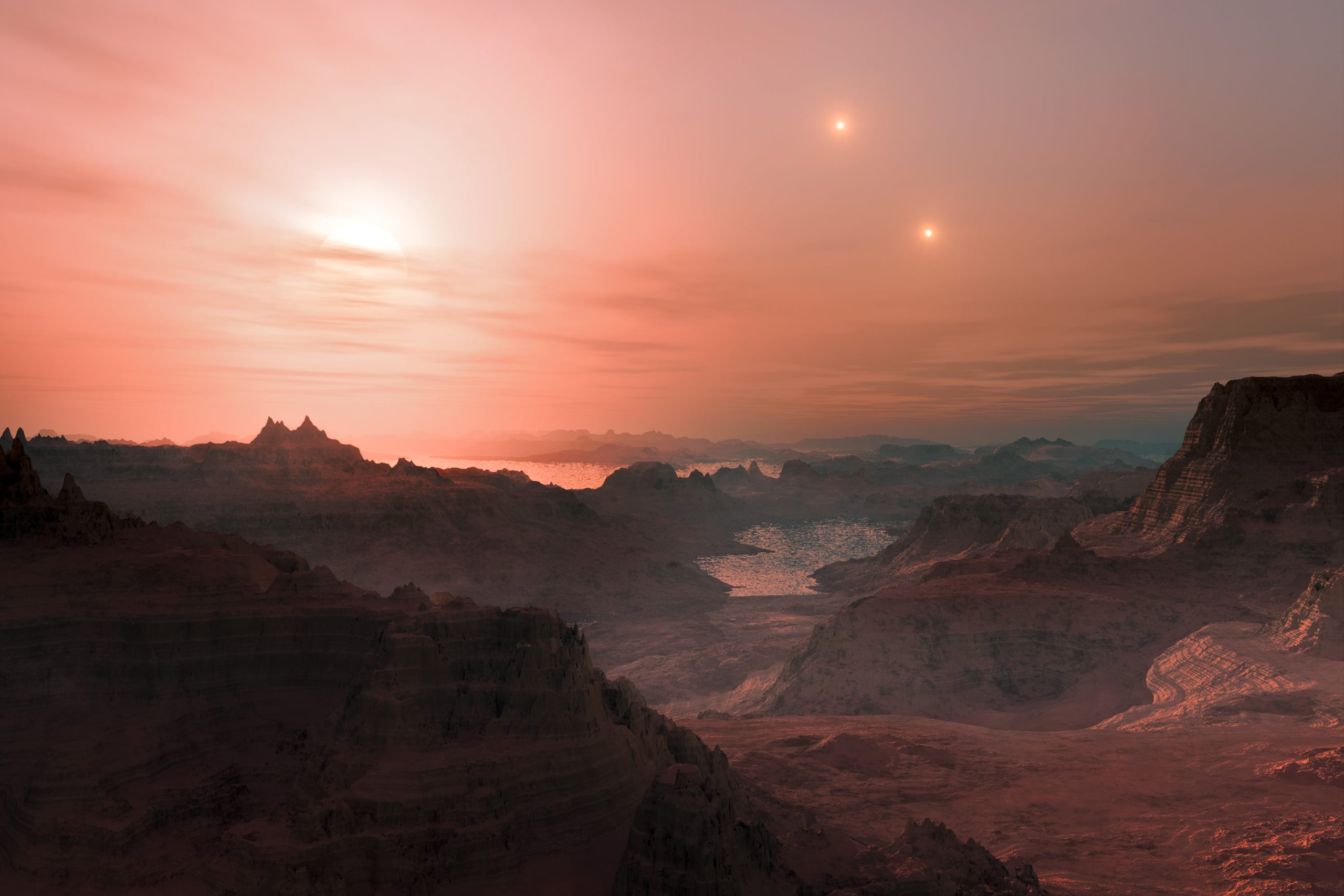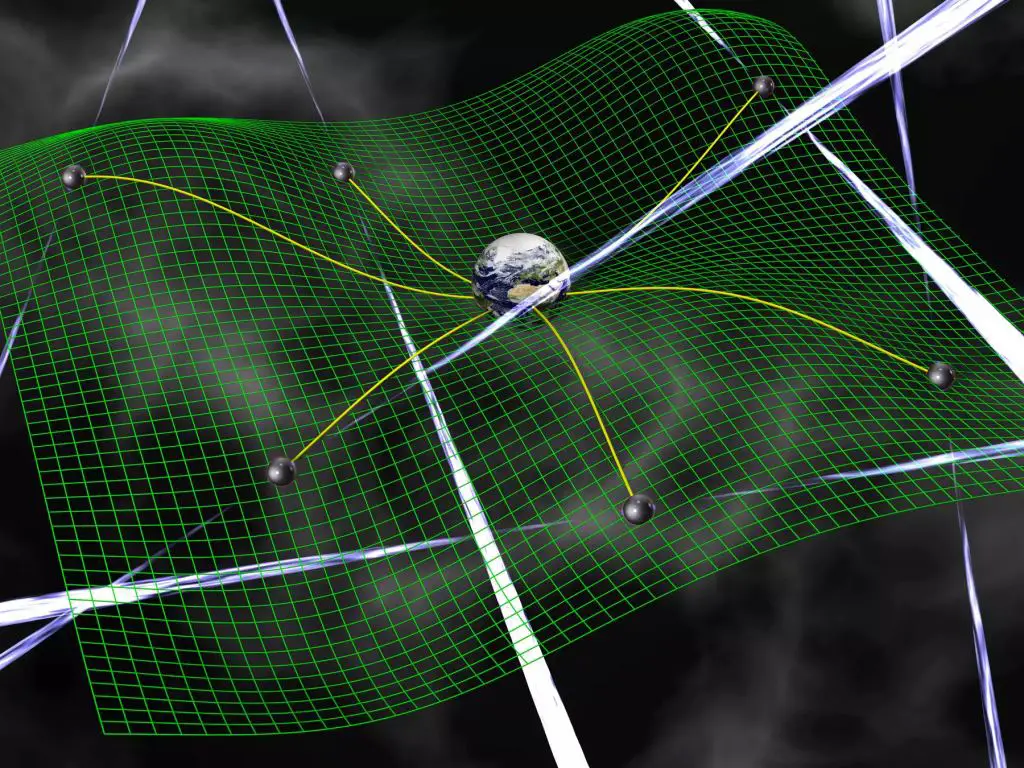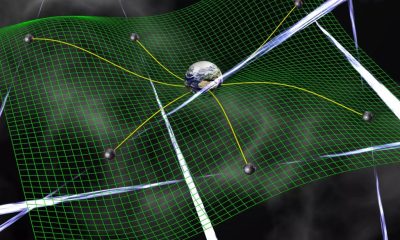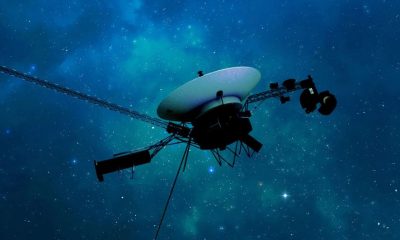News
Scientists are studying exoplanets to expand our knowledge in the realm of science fiction.

As long as it has existed as a genre, there has been a notable relationship between science fiction and science fact. Since our awareness of the Universe and everything in it has changed with time, so have depictions and representations in popular culture. This includes everything from space exploration and extraterrestrial life to extraterrestrial environments. As scientists keep pushing the boundaries of what is known about the cosmos, their discoveries are being related to the public in film, television, print, and other media.
In the field of science communication, however, there is a certain hesitancy to use science fiction materials as an educational tool. In a recent paper that appeared in the Journal of Science Communication (JCOM), a team from the St Andrews Centre for Exoplanet Science and the Space Research Institute (IWF) of the Austrian Academy of Sciences focused on a specific area of scientific study – extrasolar planets. After analyzing a multimedia body of science fiction works produced since the first confirmed exoplanet discovery, they found that depictions have become more realistic over time.
The team was led by Emma Johanna Puranen, a St Leonard’s Interdisciplinary Doctoral Scholar at the University of St Andrews with degrees in astronomy and history. She was joined by Emily Finer, a senior lecturer at the University of St Andrews and co-director of the interdisciplinary St Andrews Centre for Exoplanet Science; V Anne Smith, a senior lecturer in the School of Biology and associate dean curriculum for the faculty of Science at the University of St Andrews, and the IWF Director Christiane Helling. Together, they conducted a Bayesian network analysis of exoplanet representations before and after the discovery of actual exoplanets.
Artist’s concept of the exoplanet, LTT 1445Ac, which is a nearby Earth-size world that orbits a red dwarf star in a trinary system. Credit: NASA/ESA/L. Hustak (STScI)
The interrelationship between scientific discovery and their portrayal in science fiction is certainly well-known. However, that does not mean that the phenomenon is well-understood, and attempts to study it are still in their infancy. As part of her thesis work, Puranen and her colleagues sought to address this by documenting a key example. As she explained to Universe Today via email, it is difficult to pin down when the tradition of science informing science fiction began since its roots go rather deep:
“I would say it consciously goes back to the time in the early 20th century when the genre as we know it today was being defined. But in practice, it goes back further. Science and SF have always influenced each other. Shelley, for example, was inspired to write Frankenstein by what she read of contemporary experiments on galvanism [the therapeutic use of direct electric current].”
In addition, Puranen and her colleagues were motivated by a pervasive trend regarding science communication. This is the hesitancy on behalf of many communicators to avoid using science fiction as an educational tool, perhaps owing to a lack of clarity. “I think this happens because what is fact and what is fiction within SF is not clearly marked,” Puranen added. “One of the biggest challenges in science education already is addressing misconceptions about science that students come into the classroom with, so I can understand the hesitancy.”
For their study, she and her team began by looking at exoplanet representations since 1995, when the first exoplanet was discovered. This was the hot Hupiter 51 Pegasi b (Dimidium), a gas giant that orbits very closely to its parent star, located about 50 light-years away. The focus on exoplanets was key because of the incredible growth this field of study has experienced in recent years, ever since the launch of the Kepler mission (2009-2018). To date, 5,595 exoplanets have been confirmed in 4,160 systems, while another 10,146 candidates are awaiting confirmation).
This artist’s view shows the hot Jupiter exoplanet 51 Pegasi b (Dimidium), which orbits a star about 50 light-years from Earth in the constellation Pegasus. Credit: ESO/M. Kornmesser/Nick Risinger (skysurvey.org)
Puranen and her teammates consulted 142 science fiction works, including novels, films, television programs, podcasts, and video games. While some were recommended by team members (based on personal experience), others came from a crowd-sourced Google form, from which the team fact-checked entries. These were subjected to Bayesian network analysis, a quantitative tool traditionally used to illustrate probabilities based on certain variables – in this case, exoplanet discoveries. The parameters they focused on included characteristics like atmosphere, presence of native life, and so on.
The prospect of alien invasion has sent shivers down the spines of science fiction fans ever since H. G. Wells published his classic “The War of the Worlds” in 1897. Credit: Henrique Alvim Correa (cover art for the 1906 edition).
According to Puranen, this trend demonstrates how science fiction responds to scientific discovery. Past examples also demonstrate this close relationship. For example, how Mars has been portrayed in popular media has closely mirrored what scientists knew about the planet at the time. Prior to the Space Age, astronomical observations during the 19th century revealed several similarities between Mars and Earth, such as polar ice caps and contrasts in surface albedo (which was mistaken for land masses and oceans).
Along with linear fat were mistaken for canals and infrastructure, these observations led to the popular myth of a Martian civilization. Examples of this can be found in everything from The War of the Worlds (1898) and the Barsoon Series (1917-1948) to The Martian Chronicles (1950). But once robotic missions like Soviet Mars and NASA Mariner probes, and NASA’s Viking missions revealed the harsh nature of the Martian landscape, these myths were dispelled. After that, science fiction books focused on how Mars might someday become a second home for humanity, as exemplified by Kim Stanley Robinson’s Mars Trilogy.
The renewed interest in the human exploration century has also found representation in SF, such as Andy Weir’s The Martian. This interrelationship makes SF a potentially useful tool for illustrating the history of science and our evolving understanding of the Universe. As Puranen summarized, the study she and her team conducted could help this process by clarifying the nature of SF and how it has historically portrayed scientific discoveries in an accurate way:
“Evidencing that SF responds to scientific discovery is a first step towards incorporating it into curricula—a lot more work needs to be done, particularly I think more work in analyzing the scientific content of SF. There are people out there using SF texts in their science classrooms, mostly on a case-by-case basis—I think what our study allows people to do is place works within a broader context of the genre.
“The Bayesian network can help people compare how various texts address various scientific contexts, how SF reflects the contemporary science of the time in which it was written, and tailor their use of SF in the classroom. Personally, I think it has the potential to be an excellent tool to introduce concepts and inspire readers to want to learn more.”
Further Reading: Space Daily, Journal of Science Communication
News
Further Support for Gravitational Wave Background in the Universe

The discovery of the gravitational wave background in 2016 marked a significant milestone in our understanding of the Universe. This groundbreaking discovery was further validated by the release of a second data set from the European Pulsar Timing Array, along with the addition of data from the Indian Pulsar Timing Array. These complementary studies have provided more evidence for the existence of the gravitational wave background, shedding light on the cosmic phenomena that shape our universe.
Gravitational waves are ripples in spacetime that are generated by violent processes such as merging black holes and colliding neutron stars. Predicted by Einstein in 1916 as part of his General Theory of Relativity, these waves have the ability to travel through space, largely unimpeded by any obstacles in their path. The first detection of gravitational waves in 2015 by the Laser Interferometer Gravitational-Wave Observatory (LIGO) confirmed their existence, originating from a gravitational merger between two black holes located 1.3 billion light years away.

The recent confirmation of the gravitational wave background by the European and Indian Pulsar Timing Arrays indicates that we are detecting a combined signal from the mergers of supermassive black holes. This random distribution of gravity waves that permeates the Universe offers a new avenue for studying the cosmos, akin to the Cosmic Background Radiation. The collaborative efforts of various observatories and research institutions have enabled us to delve deeper into the mysteries of the Universe.

Utilizing pulsar timing arrays as galaxy-sized detectors, researchers have been able to monitor and analyze the pulse arrival times of galactic pulsars on Earth. By detecting subtle patterns in these signals, they can uncover the presence of the gravitational wave background. The latest study led by J. Antoniadis from the Institute of Astrophysics in Greece delves into the implications of the low-frequency signals observed in the recent data releases from various pulsar timing array systems.
The accumulation of data from multiple sources has provided undeniable evidence for the existence of the gravitational wave background. With ongoing Pulsar Timing Array projects, the signals of the low-frequency gravity waves will become more distinct, offering a wealth of opportunities to explore the Universe in this novel way. The focus now shifts towards interpreting these signals to unlock the secrets of the cosmos.
-

 Entertainment1 week ago
Entertainment1 week agoOlivia Munn opens up about her decision to have a full hysterectomy during breast cancer fight: ‘It was the right choice for me’
-

 News1 week ago
News1 week agoUniversity of Wisconsin-Milwaukee and Protesters reach an agreement to dismantle encampment
-

 Entertainment1 day ago
Entertainment1 day agoSimone Biles Emerges Victorious over Suni Lee and Gabby Douglas at Gymnastics Classic
-

 News1 day ago
News1 day agoFacing Criticism for Shooting Dog, South Dakota Governor Noem Discusses ‘Difficult Choices’
-

 News46 mins ago
News46 mins agoFurther Support for Gravitational Wave Background in the Universe
-

 Entertainment45 mins ago
Entertainment45 mins agoCourteney Cox Reveals Late ‘Friends’ Co-Star Matthew Perry Continues to ‘Visit’ Her Even After His Passing













